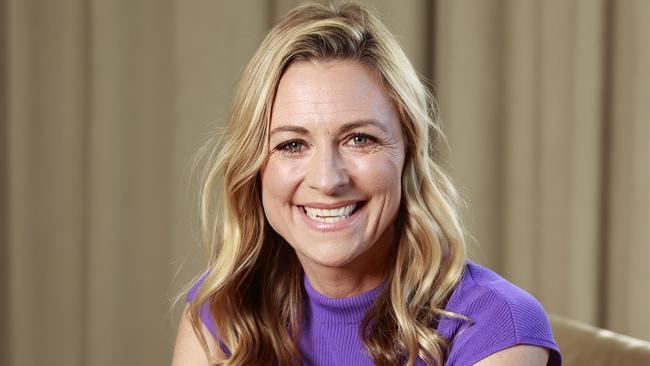How to choose the best home loan lender for you
Whether you’re refinancing or get a new home loan, there are a number of hacks that can get you a better deal.
Property
Don't miss out on the headlines from Property. Followed categories will be added to My News.
With more than 110 different lenders in the market and thousands of different home loan options to choose from, shopping for a home loan can be a time-consuming and mind-boggling task.
But once you’ve figured out a few fundamentals, such as whether you need an offset account or you want the certainty of regular repayments, it’s possible to hone in on the best deals for you and your circumstances.

WHAT TYPE OF HOME LOAN BORROWER ARE YOU?
RateCity head of research Sally Tindall said if you are looking to buy a home or an investment property, your home loan needs will be different.
While some investors will look to make interest-only repayments for the first few years to lower their costs, homeowners will need to repay principal and interest, meaning the actual loan amount plus the interest charges, from the get-go.
“The size of your deposit can make a huge difference,” she added.
“You will need to understand how big your deposit is compared to the value of the home you’re buying – what’s known as a ‘loan-to-value ratio’ or ‘LVR’.”
If your deposit size is less than 20 per cent of the property’s value, most lenders will charge you Lenders Mortgage Insurance (LMI) – an extra cost that covers them (not you) against defaults.

DO I NEED AN OFFSET OR REDRAW?
“If you are going to have spare cash after the purchase or if you get a big bonus or will be saving a lot of money you need to look for a product with either a redraw feature or offset Account,” Zippy Financial broker Louisa Sanghera said.
These both enable you to offset your loan amount with your savings, thus reducing the amount of interest you pay.
“A redraw facility is really just a way to take any extra money you’ve paid into your loan, back out,” Ms Tindall explained.
“An offset is a separate transaction account linked to your home loan. While the money in the offset goes to reducing your interest, you can use this money anytime, anywhere, using your debit card or by transferring money online.”
Both offsets and redraw facilities come with different tax implications for investors, so make sure you seek financial advice before signing up, she said.
You often have to pay an annual fee for an offset or redraw but the advertised rate isn’t necessarily more expensive than a no-frills home loan, Ms Sanghera said.

HOW DO I CHOOSE THE RIGHT LENDER?
Lenders fall into a few different categories in Australia. There’s the ‘big four’ or major banks, followed by second tier and third tier or non-bank lenders.
It’s a common misconception that borrowing with the big four is safer than borrowing with a smaller lender, Ms Tindall said.
“Lenders don’t shut their doors often and in the vast majority of recent occasions where a lender has stopped operating, it’s because they’ve been bought out by a bigger competitor,” she said.
In the event a lender does go bust, the loan will be taken over by another one, she said.
Ms Sanghera said it’s better to look at the level of customer service and technology provided when choosing a lender.
“At the end of the day, the best bank is a bank that will approve you, has good interest rates and fees on their products, policies that work for you and a servicing calculator that you qualify for a loan on.” Ms Sanghera said.

SHOULD I FIX OR STAY VARIABLE?
This is really a question around your desire for certainty, Finder money expert Richard Whitten said.
“With a fixed-rate loan you may have a higher rate (though not always) but you don’t have to worry about rate rises for a while,” he said. “You can budget for your repayments exactly and forget all about it.”
It’s important to remember that you will likely have to fork out thousands of dollars in break fees if you want to switch to a variable rate or refinance before the end of the fixed-rate term, he said.
The other risk of fixing is that you will miss out on any interest rate cuts by the RBA made during the fixed-rate term, Ms Tindall said.

COMPARISON RATE VS ADVERTISED RATE
You may have heard that the comparison rate gives a more accurate idea of the true cost of the loan, but this isn’t necessarily true, Ms Tindall said.
“The maths behind these rates is well overdue for a refresh,” she said.
While they include standard charges and fees rolled into the advertised rate, they don’t include late fees and are usually calculated over a 25 year loan term, when most borrowers are likely to keep their loan with one lender for a much shorter time, she said.
Mr Whitten said it is better to “look at the advertised rate and use a loan calculator to see what your repayments will look like each month.”
Then, it’s a matter of factoring in any fees on top.

HOME LOAN GLOSSARY
Want to learn the home loan lingo? Here are a few of the most commonly used terms when it comes to mortgages.
* Break fee – a fee you will be charged if you refinance or pay out your fixed-rate loan before the end of the fixed-rate period
* Comparison rate – an interest rate that includes the advertised rate plus any standard fees or charges over a 25 year loan term
* Equity – the difference between the value of your property and the amount remaining on your loan
* Introductory rate – this could be a lower interest rate than the ongoing advertised rate that applies for the first portion of the loan term, designed to reel in new customers
* LMI – Lenders Mortgage Insurance, an extra cost paid by the borrower to protect the lender if you can’t repay the loan. This usually applies when you have a deposit size smaller than 20 per cent of the property’s value
* LVR – Loan-to-value-ratio, the percentage of money you are borrowing from the bank against the value of the property, ie, if you have a 20 per cent deposit, you are borrowing at an LVR of 80




